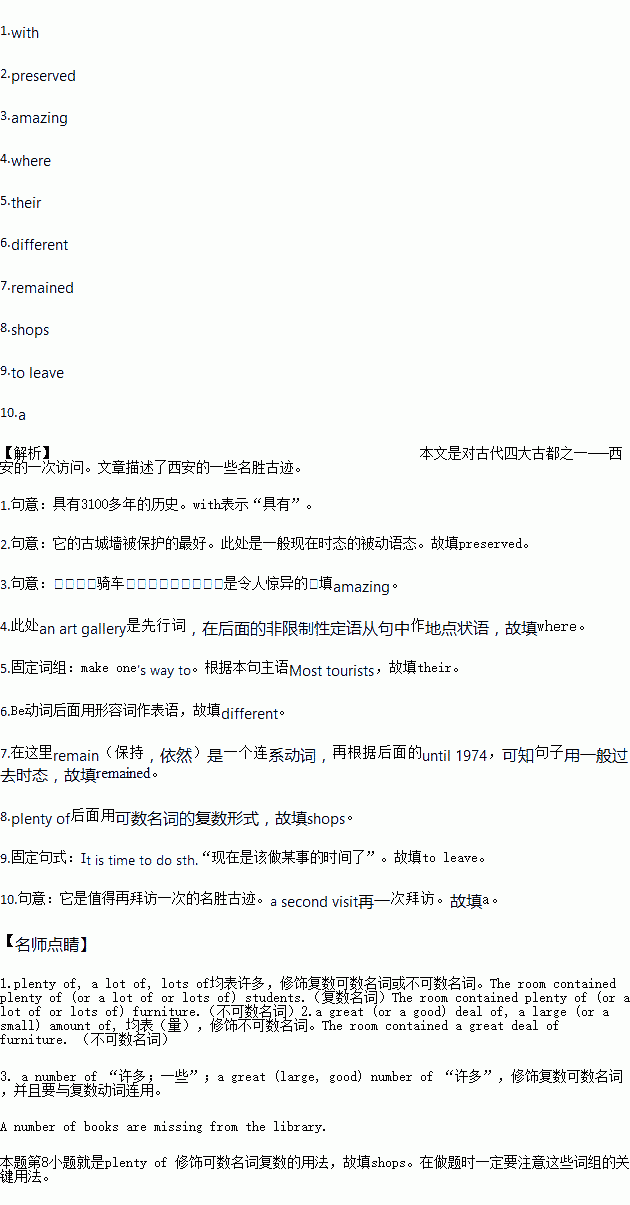题目内容
It was a short flight from Shanghai to Xi’ an. Xi’ an is one of the four great ancient capitals of China 1. over 3,100 years of history. Its ancient walls date from the Ming Dynasty and are the best 2.(preserve) in the world. There are bicycles for people to hire. It is 3.(amaze) to ride along the walls to survey this fascinating city.
The Tang Dynasty Music and Dance show is not to be missed, but my favorite is an art gallery, 4.we can enjoy some beautiful artwork and learn how to write Chinese characters.
Most tourists make 5. way to Xi’ an to see the life-size terracotta warriors (兵马俑) and we were no 6. (difference). The collection, which shows the armies of the first Emperor of China, 7.(remain) hidden until 1974 when they were discovered by a farmer sinking a well. Walking among the statues is forbidden unless you are a VIP — but there are plenty of souvenir 8. (shop) in which tourists can buy the replicas(复制品)of them.
All too soon it was time 9.(leave). I really enjoyed my stay in Xi’ an. It is indeed a place of interest worth 10. second visit.


 e book will have an adventure, traveling far and wide with each new reader who finds it.
e book will have an adventure, traveling far and wide with each new reader who finds it.